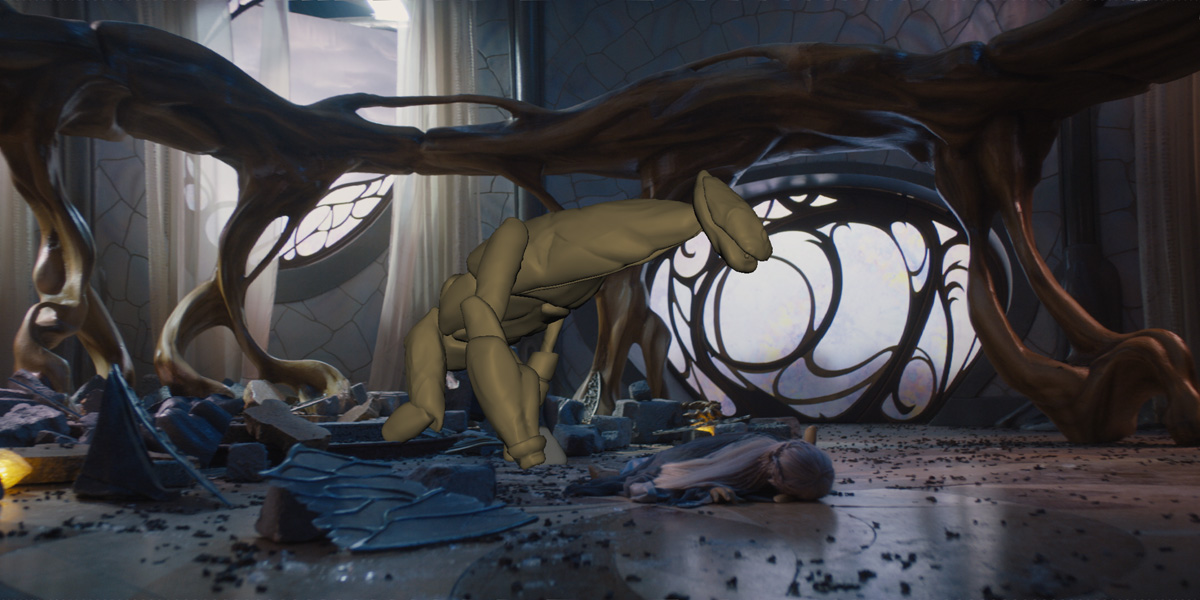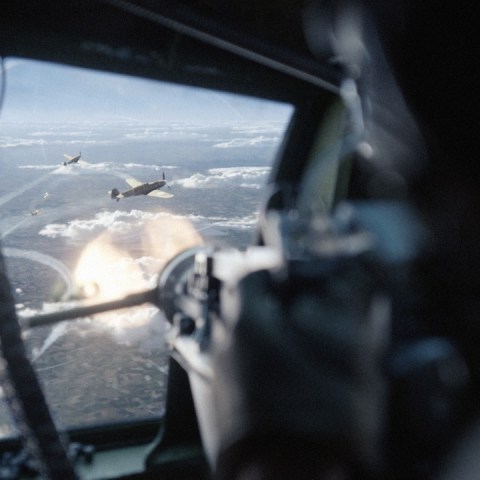When you watch Netflix’s The Dark Crystal: Age of Resistance, the hand-made feel of the show is entirely apparent on screen. The use of puppets and puppeteers brings something special to this Jim Henson Company production, as it had done for the 1982 film.
But it is also the case that the world of Thra and its inhabitants feel even more expansive thanks to significant visual effects, namely from DNEG, which crafted more than 4,000 VFX shots for the series. This involved a range of very different work, including the addition of CG creatures that had to match the fabricated puppets built for use on set.
That matching was both in terms of look and feel and the actual animation; any kind of movement employed on a CG creature would appear out of place if it didn’t adhere to what a puppeteer could do, seeing as so many of the creatures were brought to life in that practical way. So, whenever DNEG was faced with a CG animation challenge, it looked to the real puppeteering, of course, for reference.
DNEG’s journey into Bunraku
One character, Lore, was originally imagined as a CG-only creature. However, in exploring options for how the rock-like character would form and walk, it turned out to be one that was largely accomplished with puppeteers dressed in bluescreened material and with Lore connected to their boots and to rods.


A CG Lore still made an appearance. At one point, DNEG went so deep into replicating puppeteering process that it actually created a rig where the animator would animate a human puppeteer via a system of virtual offset rods that would connect ‘Bunraku’ style to animate the CG Lore puppet.
“With that approach, what that meant was the animator didn’t actually animate the puppet that they were animating, they were driving the puppet by animating the human puppeteer,” says DNEG’s Sean Mathiesen, the production visual effects supervisor for Age of Resistance. “That was a pretty interesting process, but there’s a lot of intuition that the puppeteers bring to their art. It’s difficult enough for a puppeteer to puppeteer a puppet, but to get an animator to animate a puppeteer that’s puppeteering and puppet is tenfold more complex.”


Mathiesen adds that the experiment delivered some interesting results but was not something they used. “The process was so agonizing that we used that experiment and learned from it and then took away the puppeteer portion of that and animated the puppet itself.”
CG Gelflings
Most of the show’s Gelflings were hand puppets, which meant they were operated by puppeteers who either kept out of camera frame or wore bluescreened or greenscreened materials to be digitally erased via VFX later. However, several shots of Gelflings walking, running or performing stunts required something extra. In those cases, DNEG crafted CG versions of the characters after acquiring scans of the puppets themselves. When it came time to animating them, much emphasis was placed on how Gelflings moved in ‘puppeteer space’, as Mathiesen relates.

“Kevin Clash, who was the puppet captain on the show, talked a lot to me about how Jim Henson had made Gelflings walk and how puppeteers would imitate that walk for the original film. So, you have a puppeteer who is bent over sideways. His arm is up in the air and his hand is talking through the Gelfling’s head. And he would walk through a frame – but not be seen by the camera – and he would bounce his body. And he talked about the fact that Jim would really use his whole body all the way down to his knees and ankles, instead of just bobbing from the shoulder.”
The point is that Henson would move his whole body to get the walking motion, not just ‘fake’ it with hand and shoulder action. “It meant the arm, the shoulder and elbow of the puppeteer stayed more stationary and the body was doing the heavy lifting to give the Gelflings a walk cycle,” says Mathiesen.

DNEG’s team of artists would analyze the puppeteer ‘walk cycle’ on Age of Resistance and apply that to the CG Gelfling, submitting tests to director Louis Leterrier for review. “It was just many, many iterations of analyzing what the puppeteers would do, but only as a half-body because there is no way to imitate an actual walk cycle of a puppet, because they can’t walk,” says Mathiesen. “It had to match the kind of hyperreal way that a puppeteer does that walk. We would have to incorporate that into our animation pipeline.”
Images courtesy of DNEG © 2019 Netflix.

















